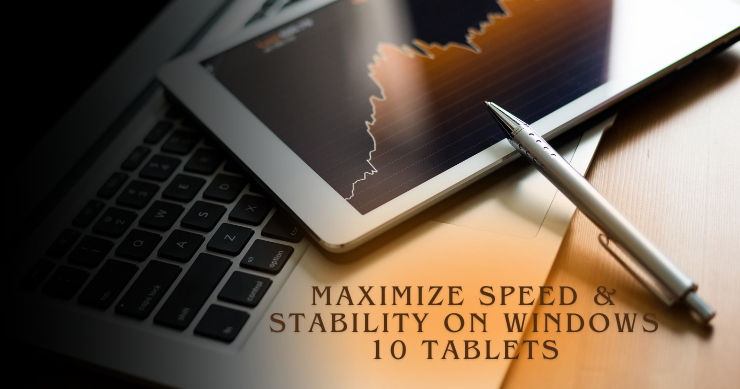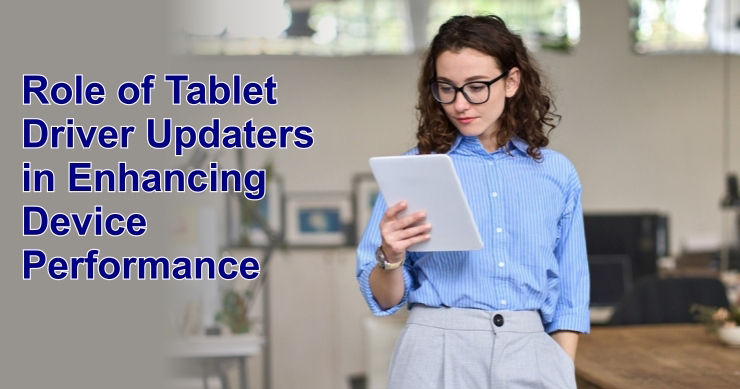Maximise Speed & Stability on Windows 10 Tablets
- Audio Driver Updater
- Nov 6, 2024
- 5 min read
Windows 10 tablets offer the versatility of a full-fledged computer with the portability of a tablet. Whether you're using it for work, school, or entertainment, your tablet needs to perform at its best to ensure a seamless experience. However, many users often face performance issues such as slowdowns, crashes, or unresponsiveness. While there can be multiple reasons behind these issues, one of the most common yet overlooked causes is outdated or incompatible drivers.
Drivers are essential software components that allow your tablet's hardware—such as the touchscreen, stylus, and other peripherals—to communicate effectively with the operating system. When drivers are outdated or not functioning properly, they can significantly affect your tablet’s performance. By regularly updating your tablet drivers, you can maximize the speed, stability, and overall user experience of your Windows 10 tablet.

Why Driver Updates Matter for Speed & Stability
When a tablet’s drivers are out-of-date, it can cause all sorts of performance issues. A driver is the intermediary between the operating system and the hardware. For example, if the driver for your tablet’s touchscreen isn’t updated, you may experience issues such as delayed response time, unresponsiveness, or touch input errors. Similarly, graphics drivers that are outdated can cause sluggish performance in videos, games, or even while scrolling through web pages.
By keeping your drivers updated, you are essentially ensuring that your tablet is fully optimised to work with the latest Windows 10 updates, apps, and hardware improvements. These updates often include performance enhancements, bug fixes, and compatibility improvements that can eliminate lags, crashes, or slowdowns.
A Tablet Driver Updater tool can help you identify which drivers need updating, allowing you to keep your tablet running smoothly and efficiently. Regularly updating your drivers is one of the most straightforward and effective ways to improve tablet performance.
How Outdated Drivers Affect Speed and Stability
Outdated or faulty drivers are a common culprit behind slowdowns and instability. Here are some of the main issues caused by old drivers:
Unresponsiveness: Without up-to-date drivers, your tablet may become sluggish in responding to touch gestures or keystrokes. Your touchscreen may fail to register taps or swipes, making tasks frustrating and time-consuming.
System Crashes: When drivers become incompatible with the latest Windows 10 update, it can cause system instability, leading to crashes, freezes, or blue screen errors. This can be particularly disruptive if you rely on your tablet for work or important tasks.
Performance Lag: Graphics and processor drivers are crucial for ensuring smooth performance, especially in high-demand applications like gaming, video editing, or running multiple apps simultaneously. Outdated drivers may cause screen tearing, lagging video, or even failure to load certain programs.
Battery Drain: Inefficient power management in outdated drivers can also cause your tablet’s battery to drain faster, reducing its battery life.
Role of Driver Updater Tools
Manually updating drivers on your Windows 10 tablet can be a tedious process, especially when there are multiple devices to track and keep up-to-date. While Windows 10 does offer a built-in update system, it’s not always reliable in ensuring that all drivers are updated to the latest versions.
This is where a Driver Updater tool comes into play. These tools can automate the process of scanning your system for outdated drivers, finding the most current versions, and installing them with just a few clicks. Instead of hunting down each driver individually, a Tablet Driver Updater can handle the job for you, making the process quicker and easier.
Some of the Best Tablet Driver Updater tools also offer additional features like scheduled scans, automatic backups, and restore points, ensuring that you never lose any progress if an update causes problems. This safety net makes the process of updating drivers both efficient and risk-free, especially for users who may not have much technical expertise.
Benefits of Using a Tablet Driver Updater
Time-Saving Automation: A Tablet Driver Updater can scan your entire system for outdated drivers and update them automatically, saving you time and effort. You don’t need to manually go through device managers or search for specific updates on various websites.
Improved Performance: By ensuring that all drivers are updated, you can boost the performance of your tablet. Whether it's faster touchscreen responsiveness, better graphics rendering, or improved battery efficiency, a driver update can make a noticeable difference in the overall speed and functionality of your device.
Avoid System Crashes and Instability: Updating drivers ensures that your hardware is compatible with the latest version of Windows 10, which can help prevent crashes, freezes, and system instability. Driver updates often include critical bug fixes that ensure everything works smoothly.
Better Security: Just like software applications, drivers can have vulnerabilities that can be exploited by malware or other security threats. Regularly updating your drivers helps patch these vulnerabilities, improving the security of your Windows 10 tablet.
Access to New Features: Driver updates can also unlock new features and improvements. For example, a new tablet driver might improve your stylus's sensitivity or add support for new gestures, further enhancing your tablet's functionality.
How to Use a Tablet Driver Updater
Using a Tablet Driver Updater is simple and effective. Here’s a general overview of the steps:
Download and Install: First, download a reliable Driver Updater tool. Many top tools offer easy installation with a user-friendly interface.
Scan for Outdated Drivers: Launch the tool and perform a system scan. It will detect any outdated or missing drivers.
Review & Update: Once the scan is complete, you’ll be presented with a list of drivers that need updating. Select the ones you want to update, or let the tool automatically choose the necessary updates.
Automatic Updates: Most tools offer the option to schedule automatic scans and updates, ensuring that your tablet is always running the latest drivers without any manual intervention.
Best Tablet Driver Updater Tools
When choosing a Tablet Driver Updater, look for tools that offer a combination of speed, reliability, and features. Some of the best tools on the market are capable of automatically backing up old drivers, providing restore points in case of problems, and offering scheduling features so your drivers are always up-to-date without you needing to worry.
These Best Tablet Driver Updater tools often support a wide range of tablet brands and models, ensuring compatibility across the board. With advanced algorithms, they can detect even minor driver issues and apply fixes instantly, optimizing your device for peak performance.
Conclusion
If you’ve been experiencing slowdowns or performance issues with your Windows 10 tablet, outdated drivers might be to blame. Regularly updating your drivers can drastically improve speed, stability, and security, while eliminating many common performance problems. By using a Tablet Driver Updater, you can automate the process and ensure your device is always running at its best.
A Driver Updater tool not only saves you time but also reduces the risk of errors caused by incompatible drivers. Whether you're using your tablet for work, gaming, or entertainment, driver updates are key to maintaining a seamless, high-performing experience. So, maximize the speed and stability of your Windows 10 tablet today by keeping your drivers up-to-date.



Comments